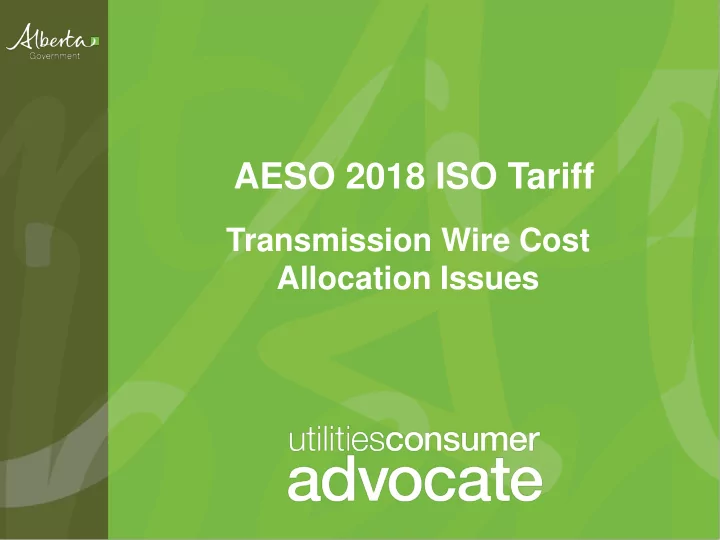

AESO 2018 ISO Tariff Transmission Wire Cost Allocation Issues
Current Approach • Bulk system defined as lines operating at 240kV and above. Allocated using a 12 monthly Coincident Peak Allocator (with each of 12 months based on a single hour) • Regional system defined as lines operating below 240kV Allocated using Non-Coincident Peak (NCP) Allocator 2
Concerns with Current Approach • Does resulting allocation fairly reflect cost causation? Based on old vertically integrated centrally planned concepts Alberta now de-segregated with distributed independent generation HVDC is part of significant changes to system topology and trade • Does allocation method provide stable results? The use of CP based on single hour allows gaming and instabilities. 3
Requested Sensitivity Analysis 1. For cost allocation purposes redefine “bulk” and “regional” system so that: The bulk system comprises HVDC and AC lines operating above 240kV only Regional systems AC lines operating up to and including 240kV Provide the resulting cost allocation and tariff change distributions by customer class 4
Requested Sensitivity Analysis 2. Modify the existing 12 CP allocators: So that the allocations for each of the 12 months are based on the mean of the 12 highest hourly peak demands within that month. Provide the resulting cost allocation and tariff change distributions by customer class 5
Requested Sensitivity Analysis 3. Combine both modifications suggested in 1 and 2, and provide: the resulting costs allocation Tariff change distributions by customer class 6
Conclusion It is the UCA’s view that completion of the requested analyses will assist in the review of a functionalization and cost allocation process that better reflects the nature of Alberta’s evolving transmission. 7
Questions 8
Recommend
More recommend